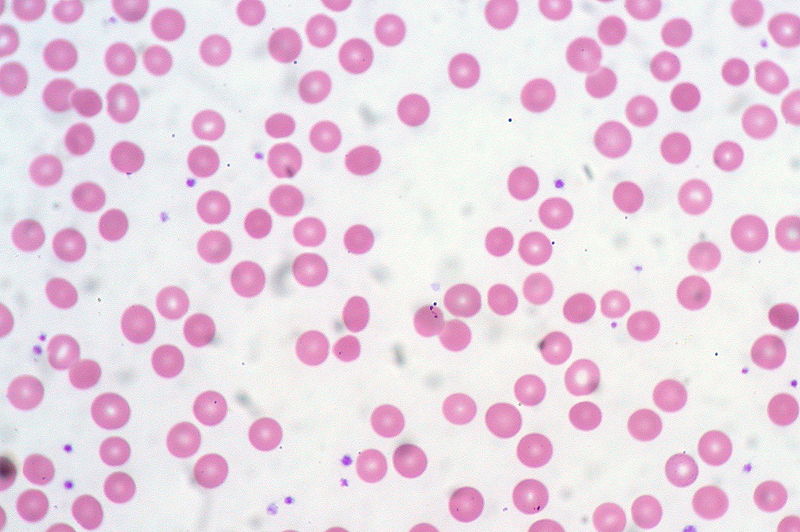Playlist
Show Playlist
Hide Playlist
Iron Deficiency Anemia: Introduction
-
Slides Iron Deficiency Anemia-Iron Studies.pdf
-
Download Lecture Overview
00:01 Our first category of anemias, we’ll be looking at microcytic anemias. 00:05 And under microcytic, it will be iron deficiency. 00:08 Think about where you are. 00:09 Your MCV is? Good. 00:12 Less than 80. 00:14 Let’s begin with the fundamentals, shall we? We’ll take a look at hemoglobin. 00:18 Hemoglobin is made up of alpha and beta. 00:21 That is something that you must know. 00:24 Later on at some point, when we talk a microcytic anemia known as thalassemias, then we’ll be dealing with those alphas and betas, but in addition, we’ll also take a look at your deltas and gammas, won’t we? And with hemoglobin, here, under iron deficiency and a couple of others, we’ll be paying attention to the heme, the heme, the heme. 00:46 And so because heme is so tightly bound or really associated with iron. 00:53 You must be familiar with your iron studies for labs and you will only be using that for the most part under microcytic, and understand what it means when your iron studies come back to be normal. 01:06 First, with our microcytic anemias, we’ll take a look at the heme in which it has now become – For whatever reason, the porphyria pathway has then become compromised. 01:16 Well, here, at first, it’s literally the fact that the individual is iron-deficient. 01:21 So if the patient’s iron deficient, this hemoglobin that we’re seeing here, this molecule, made up of – What kind of hemoglobin would this be if it’s alpha and beta, what do you mean? Is it hemoglobin A? A2? Is it F? Is it S? Is It C? Which one is it? Good. 01:34 It’s the A, right? So normal alphas and betas is hemoglobin A. 01:38 You know that. You should know that. 01:40 If you don’t, know it now. 01:42 Because we have to talk about the different hemoglobins. 01:44 You’ve heard of hemoglobin S. 01:45 You’ve heard of hemoglobin C. 01:46 Hemoglobin A2, hemoglobin F, hemoglobin H, right? Bart’s and so forth. 01:52 There’s a bunch. 01:54 Others we’ll take a look at, anemia of chronic disease, and the chronicity becomes of utmost importance. 02:00 I’ll tell you how to handle that properly, so you will not miss a question. 02:04 And sideroblastic is rather interesting. 02:06 You might have heard of ring sideroblasts and that ring is iron. 02:11 So that is not iron deficiency. 02:12 So for those of you that have somehow only associated iron deficiency or microcytic anemia as only being iron deficient. 02:19 That is not all correct because sideroblastic anemia, if anything, is iron overload. 02:24 Are we okay? We’ll talk more about that. 02:26 And what does blast mean to you? Where are you? What do I mean where are you? “I’m at home, Dr. Raj.” No, no. 02:33 Where are you in terms of the blasts? In the bone marrow, right? Bone marrow. 02:38 Next, continuing our discussion of microcytic, but this time, we’re going to hit the globins. 02:43 And these globins then are alphas and beta thalassemias.
About the Lecture
The lecture Iron Deficiency Anemia: Introduction by Carlo Raj, MD is from the course Microcytic Anemia – Red Blood Cell Pathology (RBC).
Included Quiz Questions
Which of the following statements regarding sideroblastic anemias is most accurate?
- It is an iron overload state.
- It is an iron deficient state.
- It is due to defective beta chain synthesis.
- It is due to defective alpha chain synthesis.
- It is an intrinsic defect of the red blood cell membrane.
Customer reviews
5,0 of 5 stars
| 5 Stars |
|
2 |
| 4 Stars |
|
0 |
| 3 Stars |
|
0 |
| 2 Stars |
|
0 |
| 1 Star |
|
0 |
Very nice lecture. Teaches very well. Makes the concept interesting.
I love the way Dr. Raj teaches, very concise and interesting.





